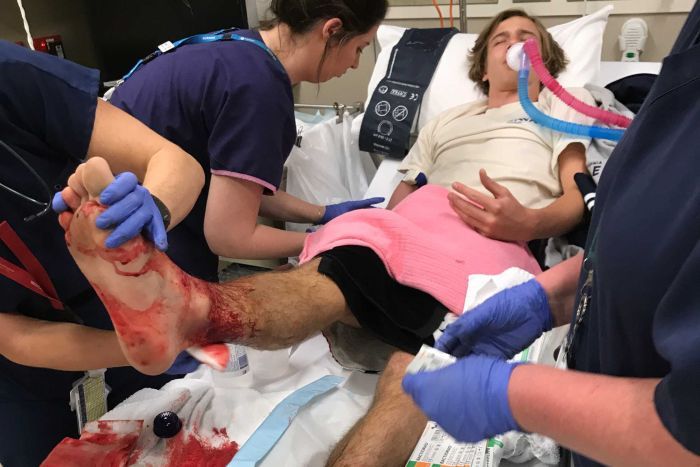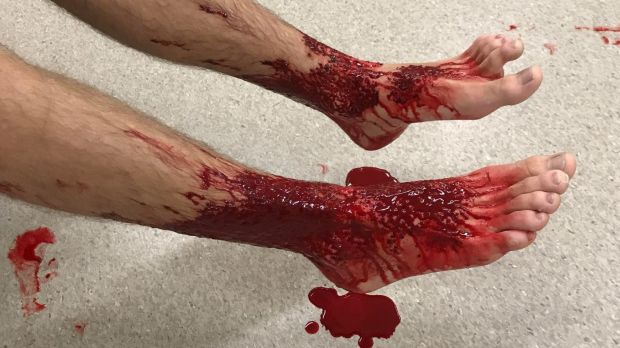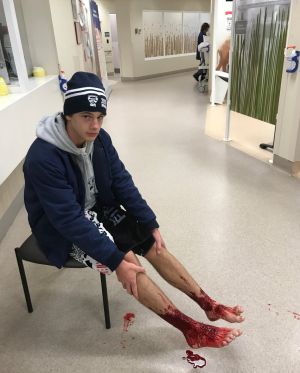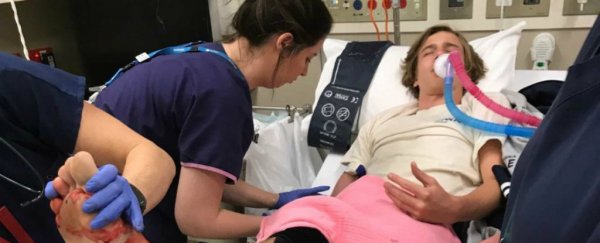It's the stuff of nightmares – you go in for a quick swim at the beach, and walk out with bites all over your ankles that won't stop bleeding.
But that's exactly what happened to 16-year-old Sam Kanizay on Saturday evening after a swim at a Melbourne beach.
He was feeling a bit sore after a football game, so went to ice his legs in the cold ocean water.
"When he got out, he described having sand on his legs, so he went back in the water," his dad Jarrod Kanizay told AAP.
"He went back to his shoes and what he found was blood on his legs… They ate through Sam's skin and made it bleed profusely."
Sam's not sure what to make of the incident either:
"My first instinct was that I must have stepped on a rock," he told Carolyn Webb at The Age.
"But I realised that couldn't have been it, because it was evenly distributed over my whole ankle and foot."
The experts think that he didn't notice the bites earlier because of the chilly weather at the Dendy Street Beach in Brighton – which got down to 3.0° Celsius (37°F) last week.
Warning – there are graphic images below:
When Sam's family couldn't get his legs to stop bleeding, they went to the hospital, where even the nurses and doctors couldn't confirm what had happened.
"As soon as we wiped them [his legs] down, they kept bleeding," Jarrod told reporters.
"There was a massive pool of blood on the floor [at the hospital]."
 Jarrod Kanizay
Jarrod Kanizay
 Jarrod Kanizay
Jarrod Kanizay
 Jarrod Kanizay
Jarrod Kanizay
Nightmares aside, what the hell are these creatures?
Well, the bad news is - we're still not sure.
A video below by Melbourne radio station 3AW shows sea lice taken from the beach on Sunday night, which looks scary, but it's important to note we still don't know if it was sea lice, or some other tiny sea monsters that caused Sam's injuries.
But how likely is it that it could it be flesh-eating sea lice?
University of Melbourne marine biologist Michael Keough told The Age that he believes that it could be an option.
"They're scavengers who'll clean up dead fish and feed on living tissue," he said.
"They're mostly less than a centimetre long, and so the bites they make are pretty small, and so that's more consistent with pinprick size marks."
But another marine expert, Michael Brown, told Sunrise he believed they might be "jellyfish larvae".
"I've been doing this for coming on 20 years now and I've never seen anything like this," he said.
Amazingly Sam seems rather unfazed about the whole thing.
"I may ice my legs in the pool from now on but I'll definitely go out swimming there again," he told Ryan Tennison at the Herald Sun.
"Plenty of people go for a swim in there so it's probably just a one-off thing."
Brave words Sam – on the other hand, we're gonna stay out of the ocean for a bit…
